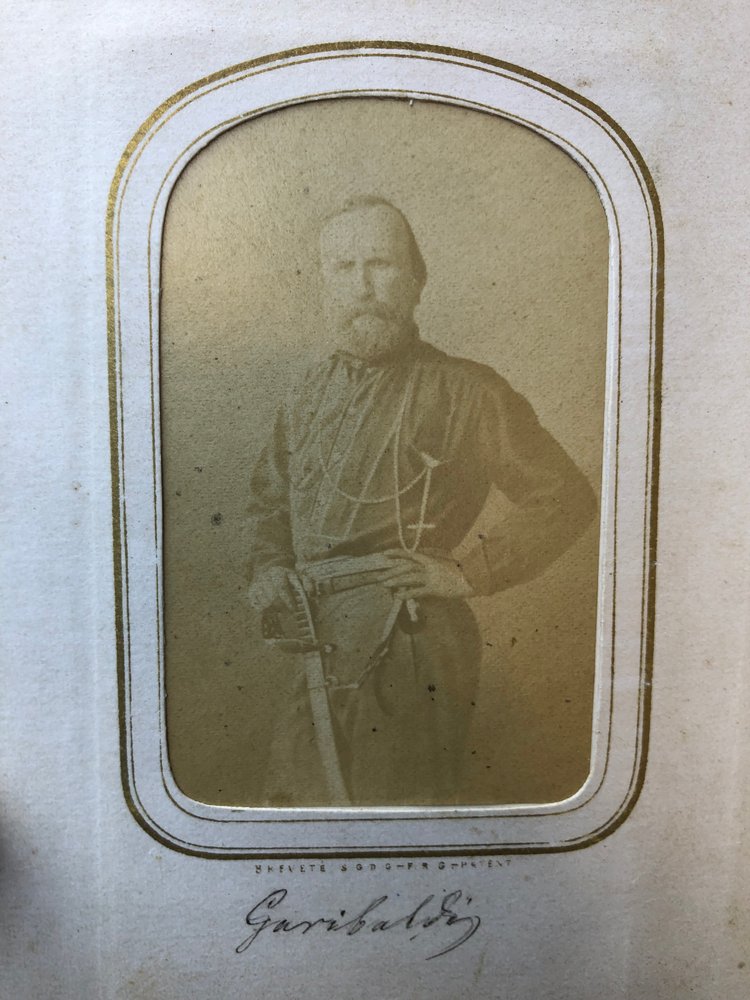In the middle of the 19th century the photo-portrait is already widespread when, in 1854, the Parisian André Adolphe Eugène Disdèri patented a system of multiple photography with four lenses, printing multiply copies while sparing expensive materials. Each image is mounted on a cardboard – here is the carte-de-visite, far less expensive than the traditional photo portrait. The carte-de-visite gains momentum and becomes fashionable within all social classes. People buy self-photographs and collect portraits of politicians, artists and celebrities, exchanged during events and gatherings.
As early as 1859, a Neapolitan newspaper, repeating a cliché of humour typical of the French and English presses, claimed the creation of the neologism «portraitmania» while describing the «baroque custom spreading amongst the fashionables of this superb city» that is the fashion of «business cards with portraits», the carte-de-visite, precisely.
In the sixties personalities with different status seemed achieving the same right to public visibility, mirrored in the catalogues and shops of photographers, booksellers and typographers. In fact, business cards of European rulers, their heirs and their families are usually offered alongside those of the main public figures, whether politicians (ministers, parliamentarians, diplomats, military), writers, artists, actors, actresses, dancers, singers, musicians, freaks and occasional protagonists of the daily chronicles.
The spread of the carte-de-visite as a “mass media” influenced the practice and language of the power representation too. Emblematic is the case of the Queen Victoria, “first media monarch”, thoroughly studied by John Plunkett as well as the features of the representation of politicians, party leaders and personalities in the Victorian Empire (J. Plunkett, Queen Victoria. First media monarch, Oxford, 2003; Morgan, Material culture and the politics of personality in early Victorian England, in Journal of Victorian Culture, 2, 2012; H. Miller, Politics personified. Portraiture, caricature and visual culture in Britain, c. 1830-80, Manchester, 2015.
Our photo album gathers 50 albumin prints of the protagonists of the Italian Risorgimento starting from Vittorio Emanuele II, Cavour, Garibaldi and Mazzini, followed by ministers and senators of the new Kingdom, portraits of Napoleon III of the Grand Duke of Tuscany and the Duke of Parma, Empress Sissi, Lord Palmerston and Queen Victoria.
Particularly rare is the photographic portrait of Garibaldi taken by the French photographer Gustave Le Gray landed in Palermo together with Alexandre Dumas to follow the early stages of the Expedition of the Thousand. The photo served the Bourbonic State as a mug shot for the search of Garibaldi. The photo of Napoleon III and the Empress of France are also interesting as the first examples of carte-de-visite produced by the studio of Disdèri, granting him and the new format success and reputation. Particularly rare are also the photographic portraits of Garibaldi’s generals such as Stefano Türr, Medici and Menotti Garibaldi. The identified photographs come from ateliers in Florence, Turin, Naples, London and Paris and are documented around 1860-1865.





